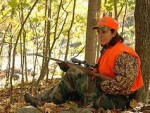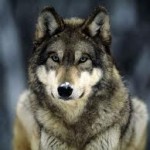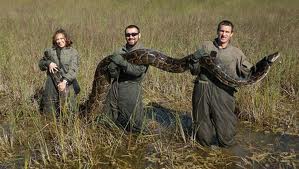 Throughout the world hunting has been used as a way to harvest animals for human consumption. In more cases then not, hunting has been managed sustainably to ensure long term availability of protein. In order to have healthy wildlife populations, a balanced ecosystem has to be maintained and preserved. Recently much attention has been given to hunting as a possible conservation tool. In addition, more hunters are actively participating in conserving wildlife and habitat to guarantee long term survival. Is it conceivable that the act of killing animals can also be used to save them?
Throughout the world hunting has been used as a way to harvest animals for human consumption. In more cases then not, hunting has been managed sustainably to ensure long term availability of protein. In order to have healthy wildlife populations, a balanced ecosystem has to be maintained and preserved. Recently much attention has been given to hunting as a possible conservation tool. In addition, more hunters are actively participating in conserving wildlife and habitat to guarantee long term survival. Is it conceivable that the act of killing animals can also be used to save them?
To see the whole picture we need to think of hunting in the nontraditional way. For some time,  hunting has been used as a way to control invasive species in nonnative habitats. Currently, several species of large constricting snake species such as boas and pythons are wreaking havoc in the Everglades National Park in Southern Florida. If environmental conditions are conducive, species like the Burmese python can propagate in record numbers. Moreover, a 15 foot + snake can eat just about anything it wants including native deer, birds, and even alligators. Trained hunters remove hundreds of snakes a month from this single area to allow survival of native wildlife.
hunting has been used as a way to control invasive species in nonnative habitats. Currently, several species of large constricting snake species such as boas and pythons are wreaking havoc in the Everglades National Park in Southern Florida. If environmental conditions are conducive, species like the Burmese python can propagate in record numbers. Moreover, a 15 foot + snake can eat just about anything it wants including native deer, birds, and even alligators. Trained hunters remove hundreds of snakes a month from this single area to allow survival of native wildlife.
Lead ammunition is commonly used by hunters. The problem with lead is that it not only kills its intended target, but other species that end up feeding on the carcass are at risk too. The fate of the California condor once rested on only 12 individuals. Through conservation initiatives like captive breeding programs the condor is slowly making a return. Lead has been linked to condor deaths via accidental ingestion of tainted carcasses at feed sites. Researchers are working with hunters to help make a change to end the use of lead ammunition to make sure efforts to save the condor are not done in vain. Hunters are the last line; ultimately their choice in shot will determine the fate of this magnificent creature.
Habitat preservation and promotion of green infrastructure is a must for a diverse and flourishing ecosystem. Regardless if hunting is done for sport or necessity, a healthy animal is prized. When an apex predator is missing from the food chain certain prey species can thrive. An over abundance of one species can cause habitat destruction for others. When wolves were removed from Yellowstone National Park in the United States, the elk population exploded. The high number of elk decimated habitat resulting in starvation of elk as well as other species that relied on similar resources for survival. Hunters were soon called upon to help decrease the elk population. In addition, habitat fragmentation continues to be a threat to the longevity of a number of species even more now as the human population is on the rise. Animals residing in small islands of habitat commonly die out due to a decrease in genetic diversity or availability of resources. By preserving large parcels of land or finding ways to connect habitats via protected corridors animals can increase their range despite ever encroaching humans. As these ideas support strong wildlife population they ultimately benefit the hunter.
 As with all things related to wildlife conservation there is no easy fix. Some would argue that the world is currently experiencing a mass extinction of sorts and so all wildlife must be saved. However, others could say it is not the quantity of wildlife, but the quality that matters; thus, wildlife and habitat have to be maintained in accordance to strict management practices. Is hunting the answer? I am not sure. One thing I can say is that hunting has evolved. Nevertheless, if your idea of safari requires a gun or camera, there will be nothing to see if we do not work together to conserve and protect. Can taking lives actually work in saving them as well?
As with all things related to wildlife conservation there is no easy fix. Some would argue that the world is currently experiencing a mass extinction of sorts and so all wildlife must be saved. However, others could say it is not the quantity of wildlife, but the quality that matters; thus, wildlife and habitat have to be maintained in accordance to strict management practices. Is hunting the answer? I am not sure. One thing I can say is that hunting has evolved. Nevertheless, if your idea of safari requires a gun or camera, there will be nothing to see if we do not work together to conserve and protect. Can taking lives actually work in saving them as well?
